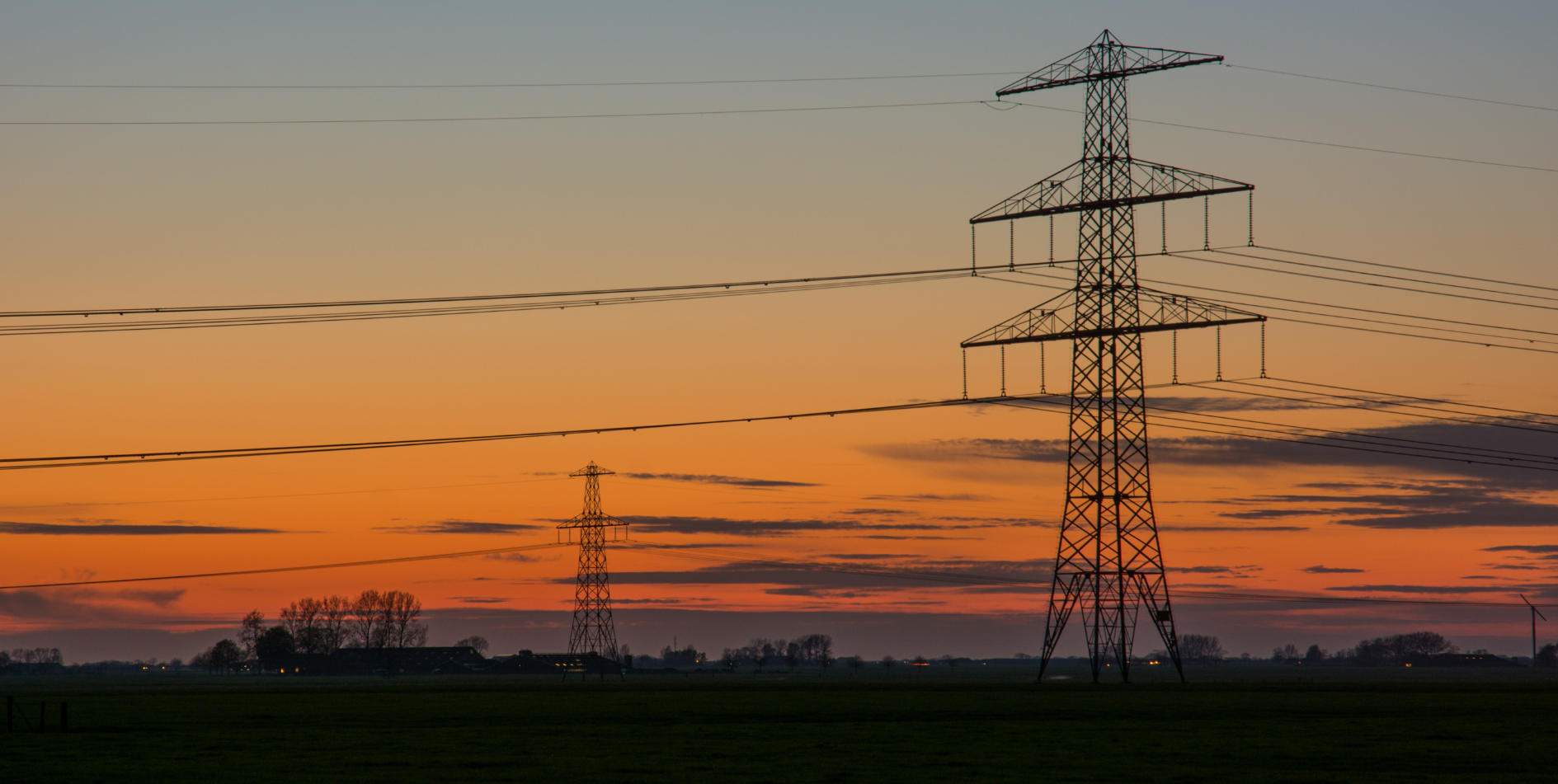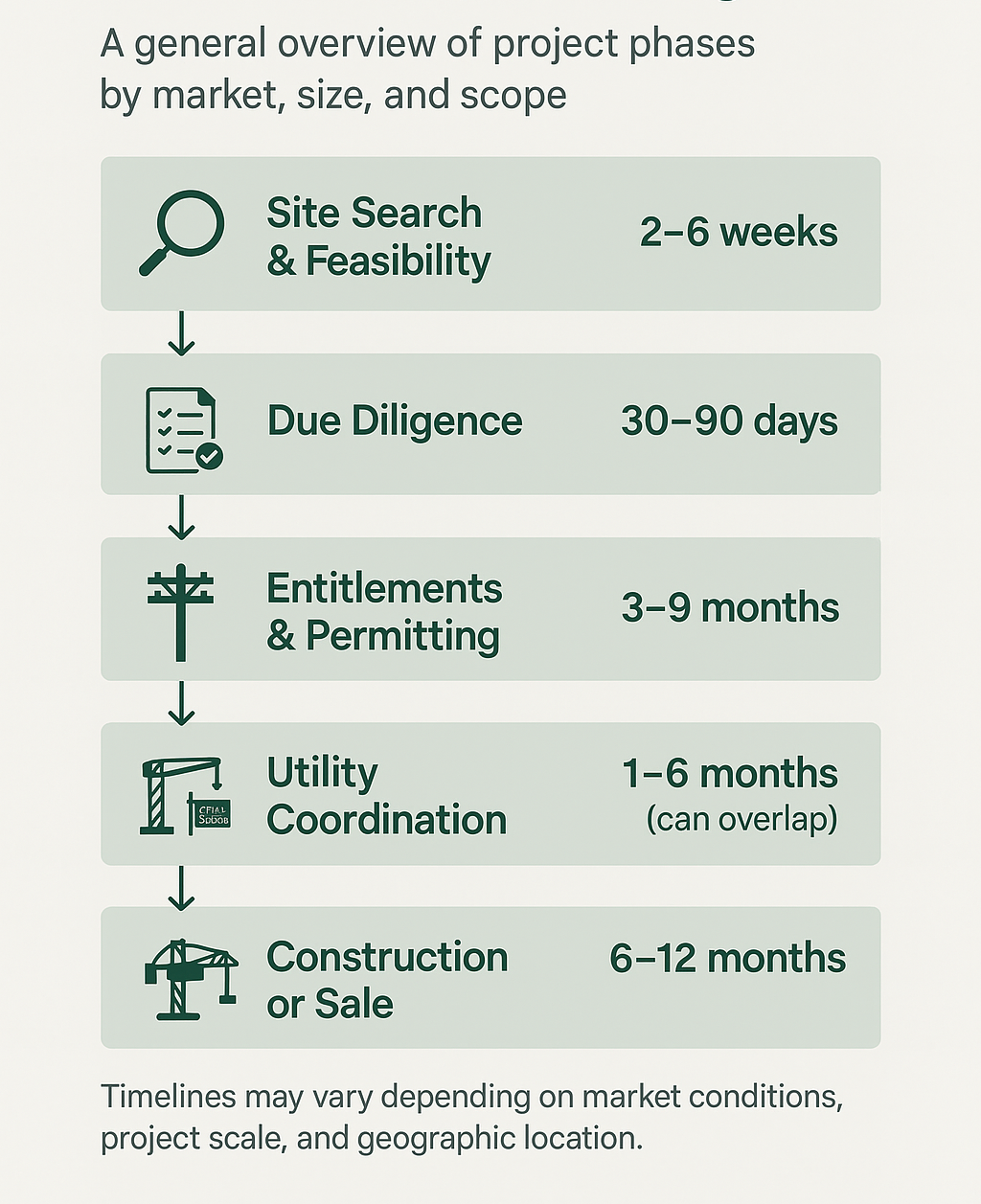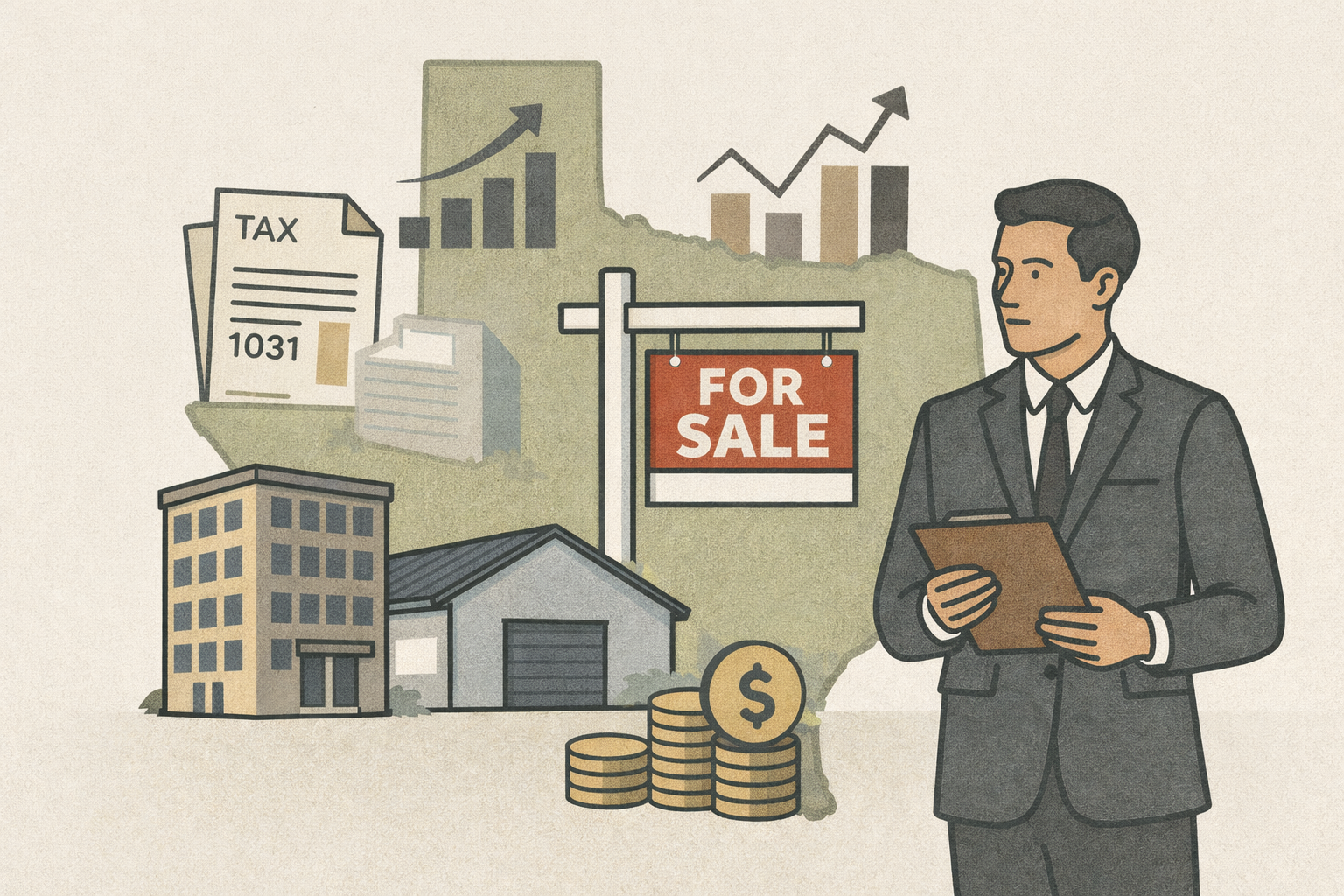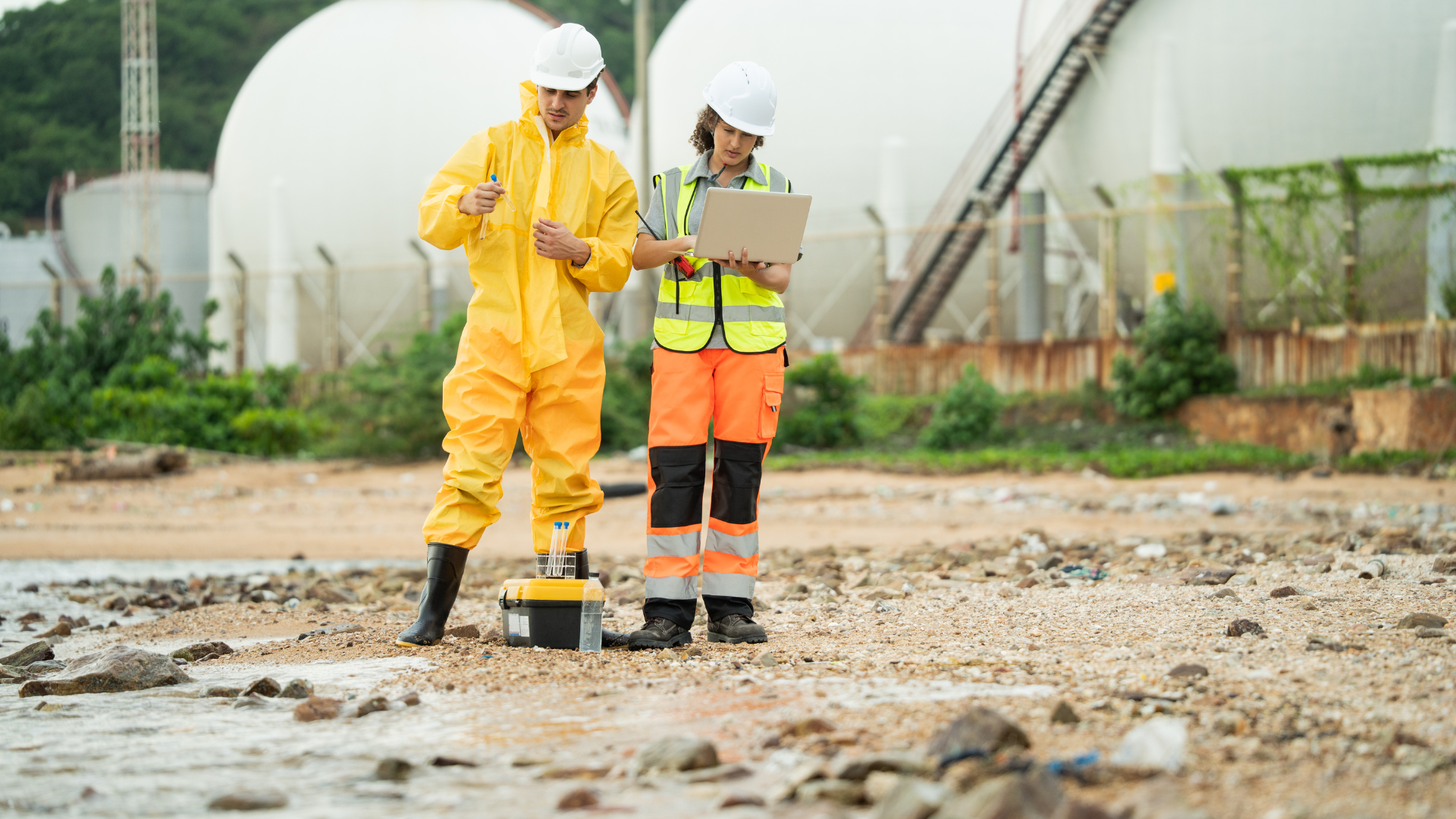August 12, 2025
Quick Summary Before You Read.....
Question: How do you turn a piece of empty Texas land into a money-making property—and what surprises should you be ready for?
Answer: Developing raw land isn’t just about finding dirt—it’s about spotting hidden deal-breakers (like flood zones and access issues), doing your homework (surveys, environmental checks, title work), navigating red tape (zoning, permits, entitlements), and tackling the expensive—but essential—tasks of utility access and road connections. It takes time (typically 12–24 months), patience, and a trusted guide to help you avoid pitfalls—and that’s where CIP’s experience helps turn uncertainty into success.
For a detailed exploration of these trends, you can read the full article below ⬇️
From Raw Land to Revenue: The Texas Land Development Timeline
Let’s be honest—buying land in Texas feels exciting. You find a piece of property that looks promising, your mind starts racing with potential (a distribution center, a strip center, maybe even a multi-tenant flex building), and everything in you wants to jump in and make it happen. But then reality sets in, and you realize:
Developing land is not just about buying dirt.
It’s about navigating red tape, zoning codes, utilities that may or may not exist, and more acronyms than anyone ever asked for.
At CIP, we’ve been down this road many times—with clients ranging from first-time investors to seasoned developers. We know what it feels like to fall in love with a site and what it takes to actually make that site generate income. So whether you're buying your first tract or your fifth, here's a straight-up look at how the land development process works in Texas.
Step 1: Site Selection & Feasibility
Don’t skip the boring stuff—it’ll bite you later.
We once had a client who found what they thought was the perfect site outside Austin. Great price. Flat land. Easy access. But after running it through our checklist, we realized it was in a floodplain and didn’t have legal access to a public road.
That’s the kind of mistake that can cost tens of thousands of dollars—or even tank the whole deal.
So before you get too attached, ask:
- Is it zoned for what I want to build?
- Are utilities nearby, or do I have to bring them in?
- Is there road access? Is it legal and buildable?
- Are there any restrictions I’m not seeing?
We do this kind of feasibility review all the time, and trust us—it’s a lot easier to check before you buy than to fix after.
Step 2: Due Diligence & Surveys
“Looks good on paper” doesn’t cut it.

Once the land is under contract, the due diligence clock starts. This is your deep dive into what you're really buying. Here’s what usually happens:
- Boundary and topo surveys (You’d be surprised how often fences don’t match actual property lines.)
- Environmental studies (No one wants to discover an old gas station was buried under their future parking lot.)
- Geotech reports (That perfect-looking soil might be unstable or expensive to build on.)
- Title reviews (Old easements and access issues can mess everything up.)
This is the phase where you want detail freaks on your team—people who will catch the tiny things that become massive headaches later.
Step 3: Entitlements, Zoning & Permits
Where patience meets paperwork.
This part is not fun, and it’s where most people get overwhelmed. Zoning changes, site plan approvals, drainage studies, traffic impact analyses—you’ll likely deal with at least a few of these.
I remember a project that should have been a slam dunk. But it sat in permitting purgatory for six months while we waited for feedback from multiple departments. Having a team that’s been through the process (and knows who to call when things stall) saved that deal from falling apart.
Expect this part of the process to take 3–9 months, depending on your city or county. Some are fast. Some... not so much.
Step 4: Infrastructure & Utilities
The hidden costs that separate dreamers from doers.

Here’s the truth:
just because utilities are “nearby” doesn’t mean they’re usable.
We’ve seen clients get excited about water or sewer lines across the street, only to discover they need a lift station, or that the city has a moratorium on new connections. That’s a $100,000+ problem, not a quick fix.
We help clients figure out:
- What’s on-site vs. what needs to be extended
- How much it’ll cost (ballpark, but better than flying blind)
- Who to contact for each step (every city is different)
You’ll also need to think about roads, drainage, and stormwater management. It’s a lot—but with the right partners, it’s doable.
Step 5: Build It or Flip It
The fork in the road: go vertical or go to market.
At this point, you’re either:
- Ready to start construction, or
- Ready to sell the now-entitled, shovel-ready site to another buyer
Some clients come to us with the goal of building a long-term income-producing property. Others just want to take the land through entitlements and then sell for a healthy profit. Both paths can work—you just need to be clear on your goals from the start.
We’ve helped clients build everything from warehouses to retail strips, and we’ve helped others package up the perfect site to sell to national developers. There's no one-size-fits-all answer—just the right path for your strategy.
What’s the Timeline, Really?

Realistically, you’re looking at
12–24 months from start to revenue.
It can be faster for smaller deals or longer for complex builds. Either way, it pays to plan ahead.
Why We Love This Work (Even When It’s Hard)
Land deals aren’t always glamorous. There’s dust, delays, and days where it feels like nothing is happening. But there’s also something incredibly satisfying about helping someone take a raw piece of Texas land and turn it into something real—a business, a warehouse, a legacy.
We’ve walked this path dozens of times, and we know where the potholes are. Our job is to guide you around them and help you keep momentum, no matter what pops up.
Thinking About Buying Land in Texas?
Whether you’re looking at five acres in Bastrop or 50 acres in Buda, our team would love to walk the property with you, answer your questions, and help you map out a realistic plan.
Reach out for a no-pressure consultation—because smart land deals don’t start with sales pitches, they start with conversations.




